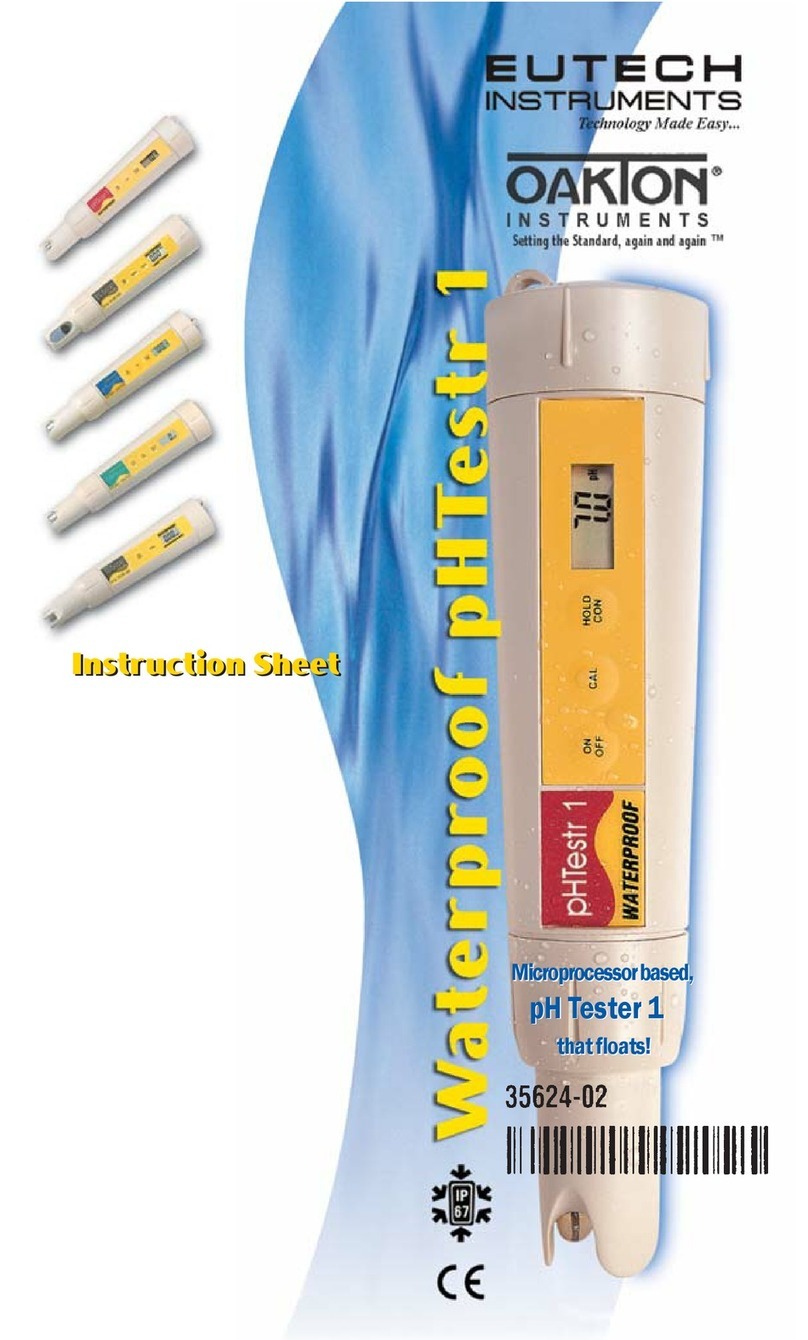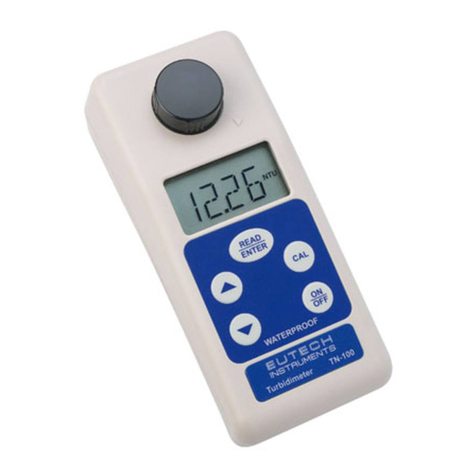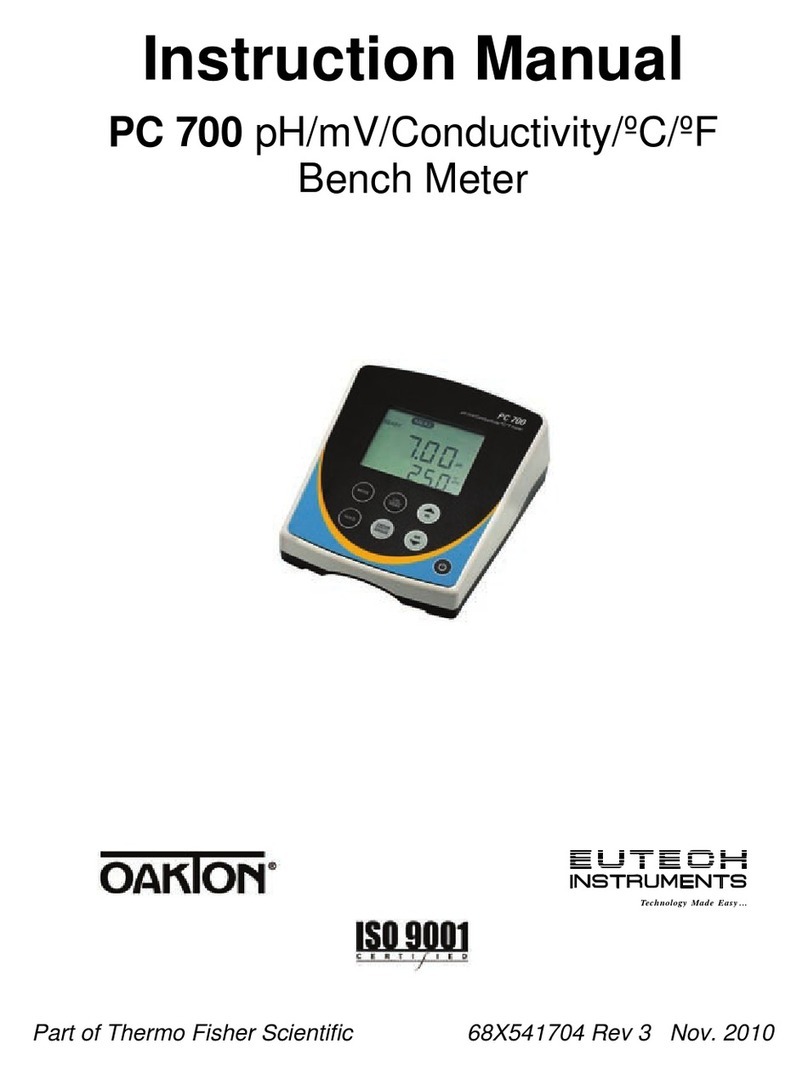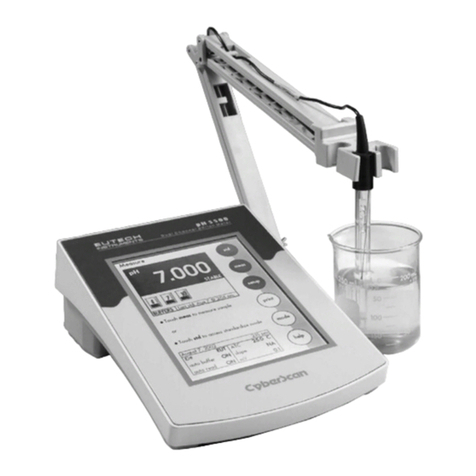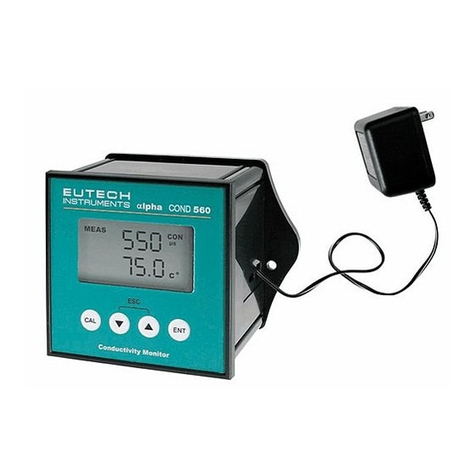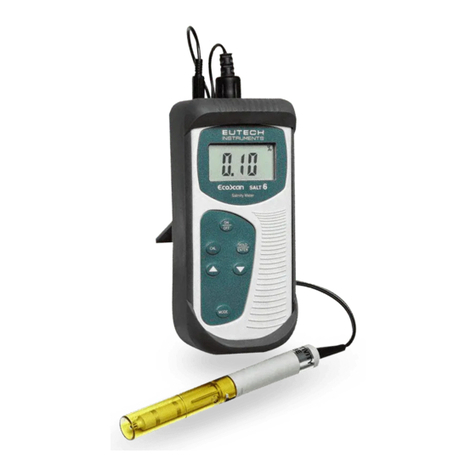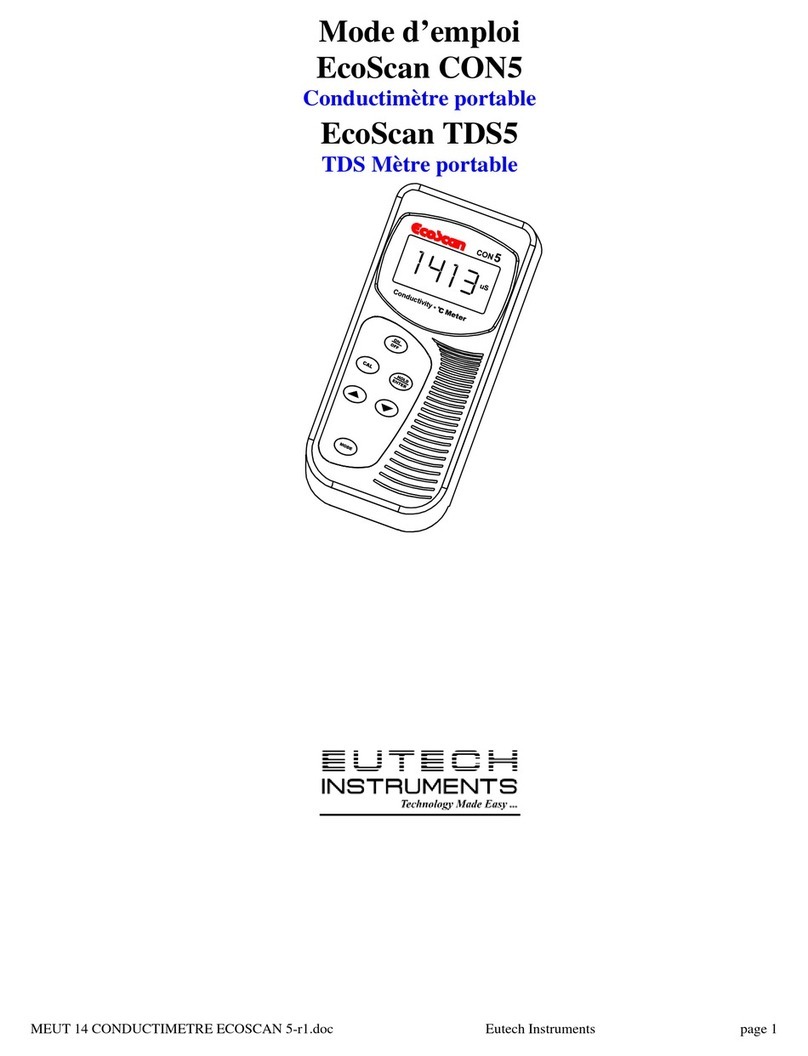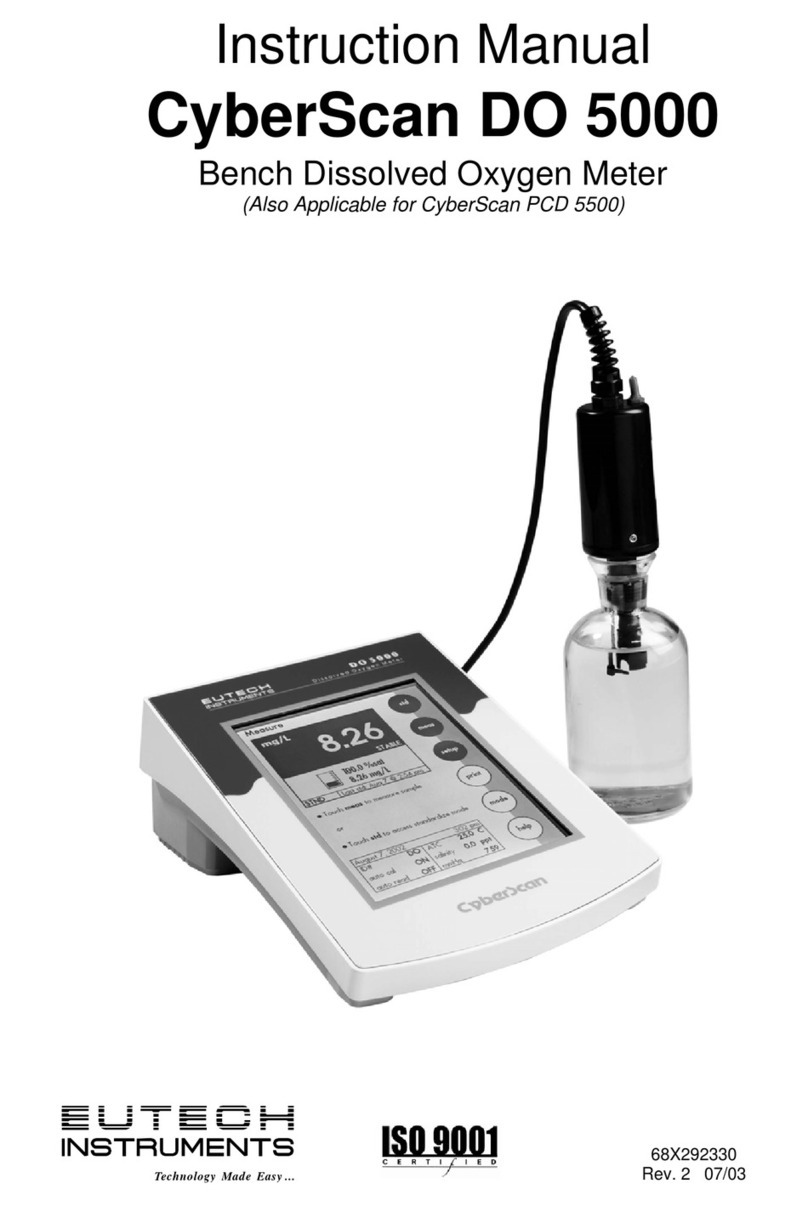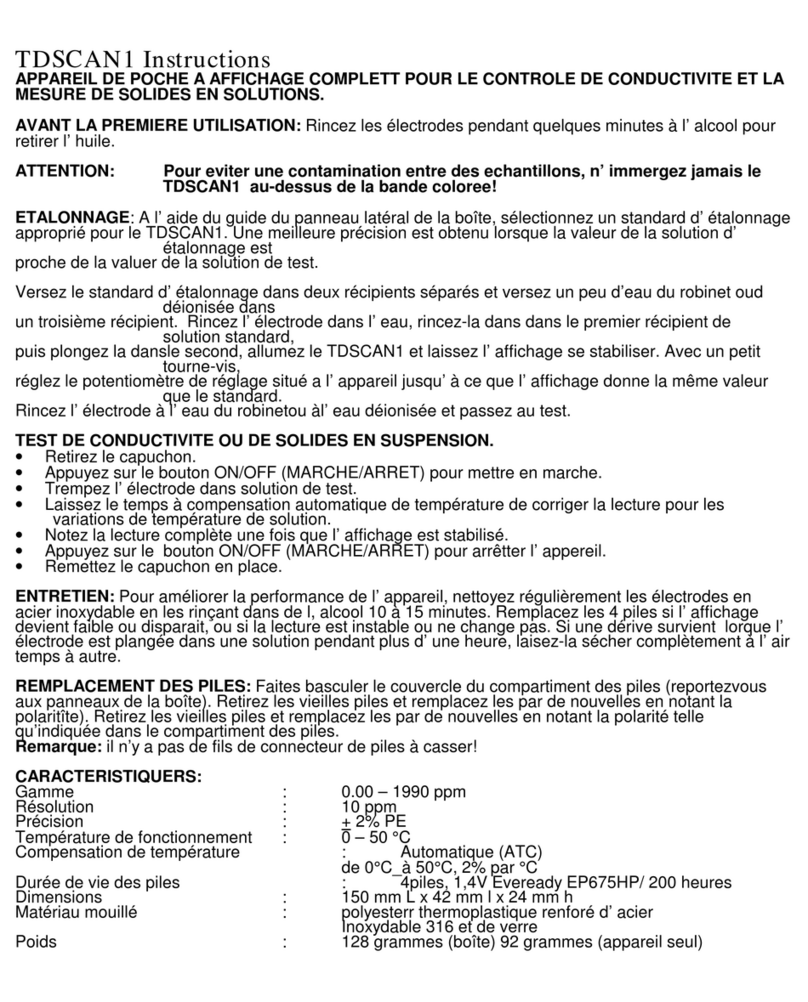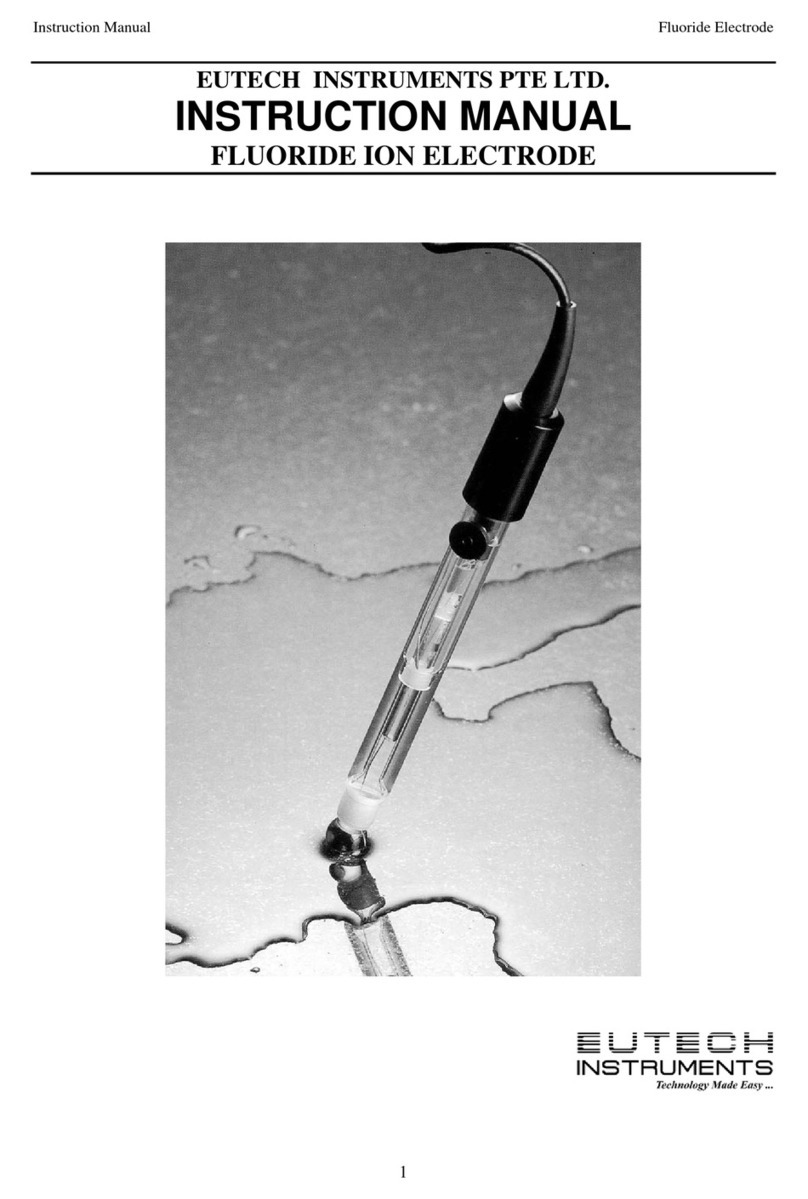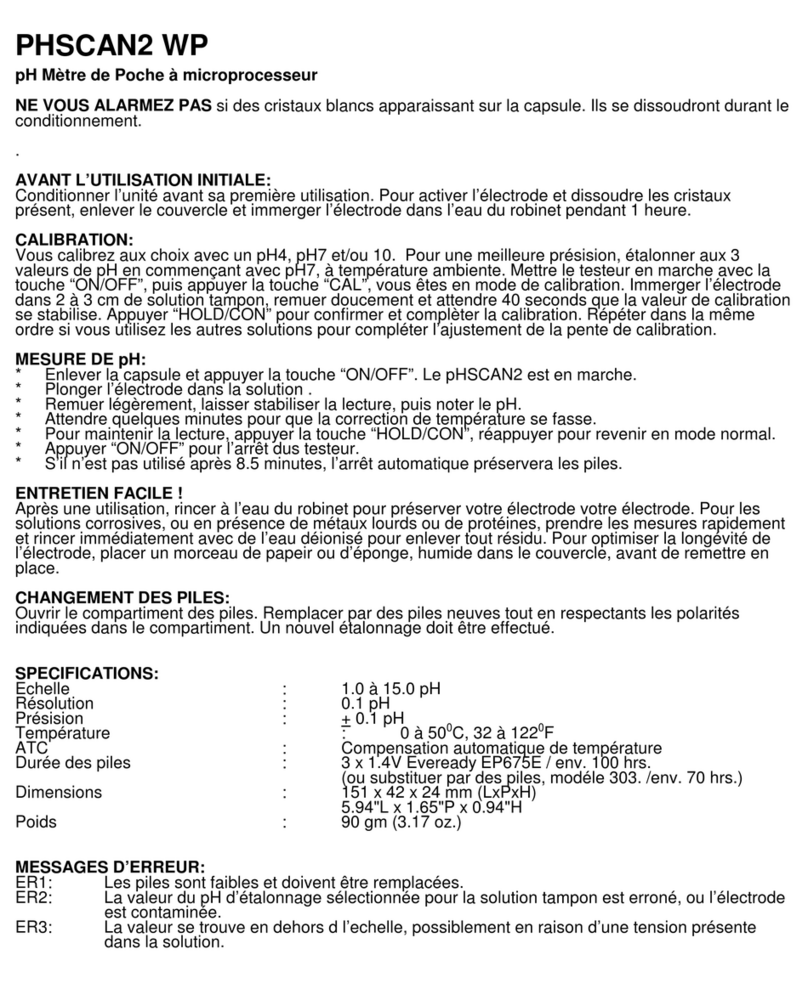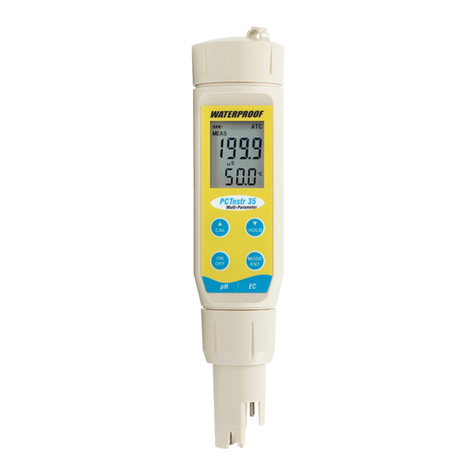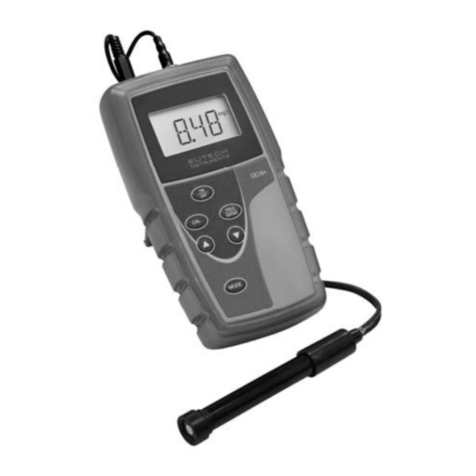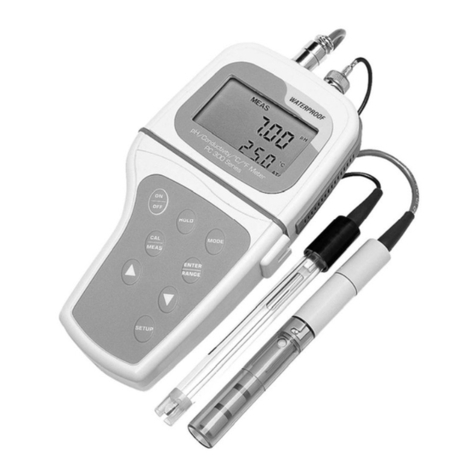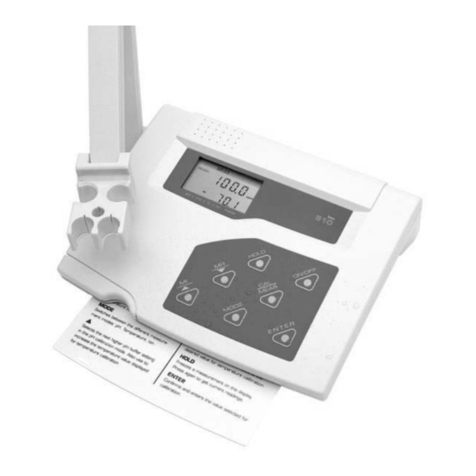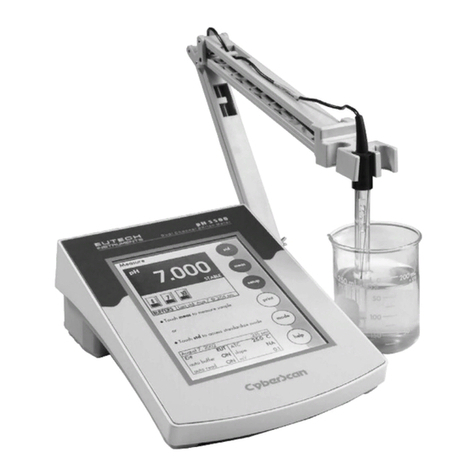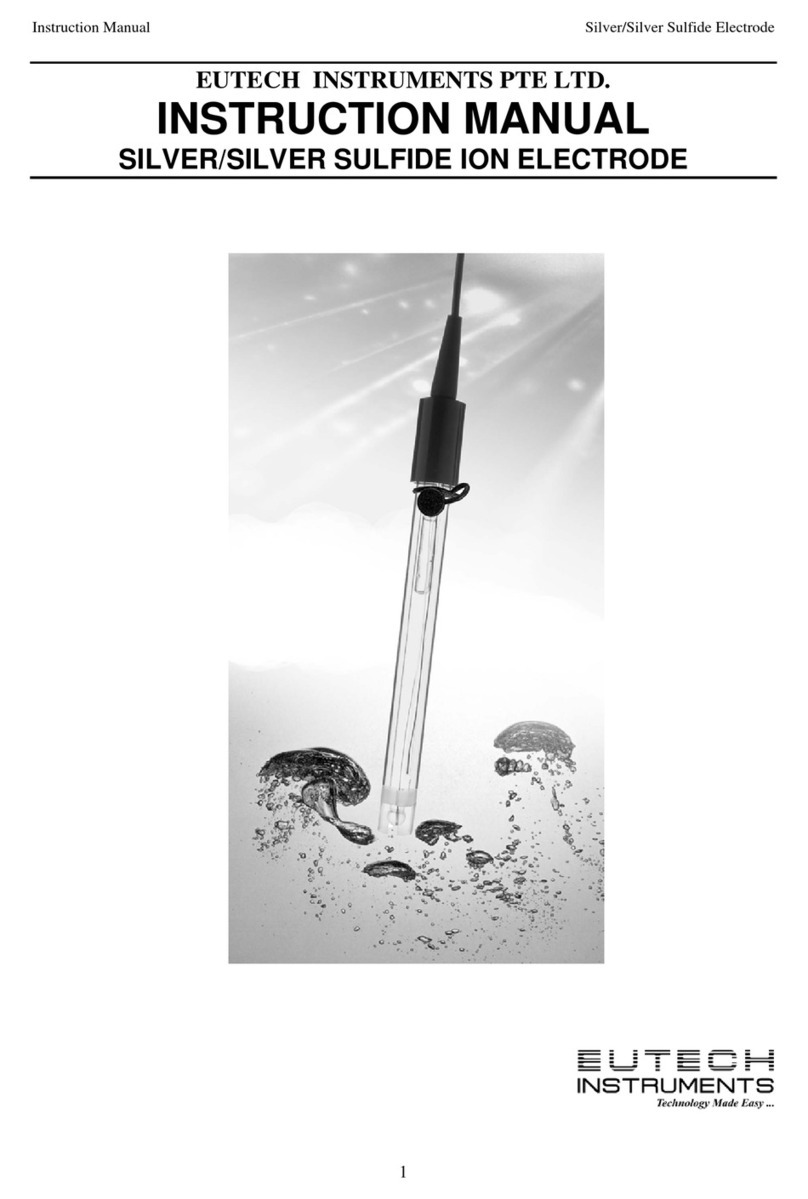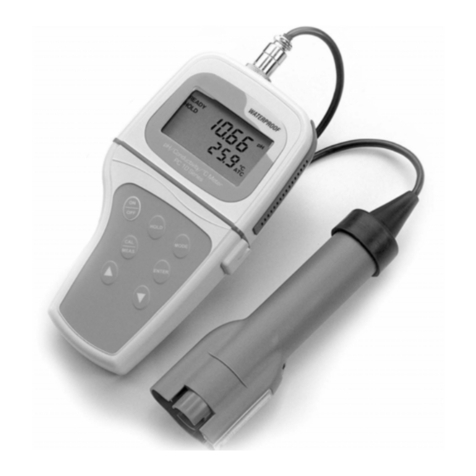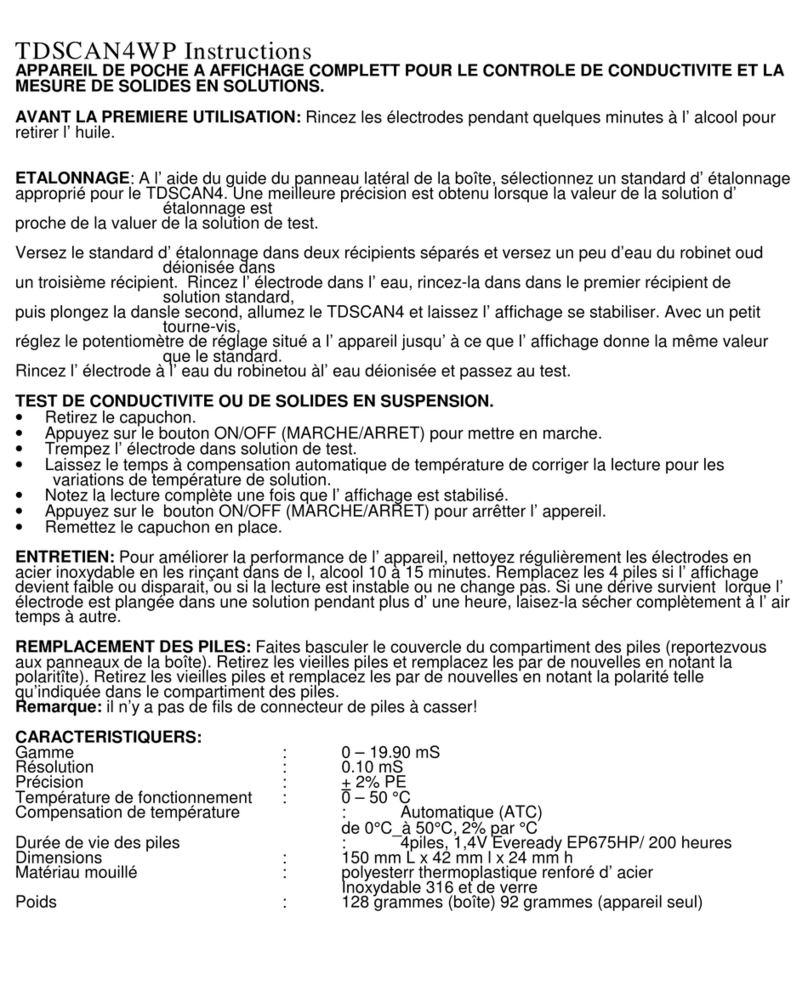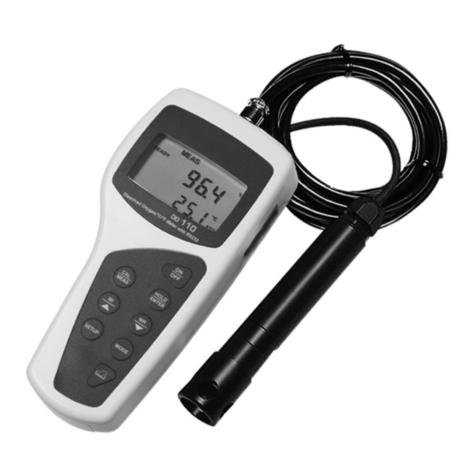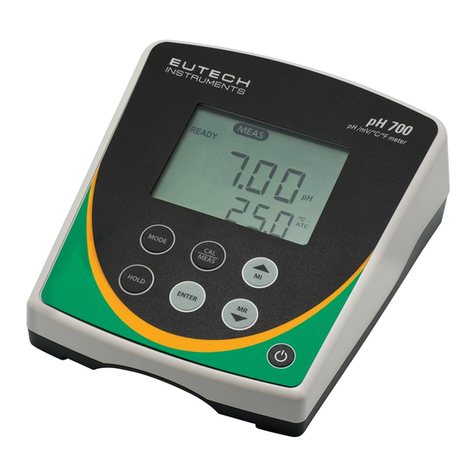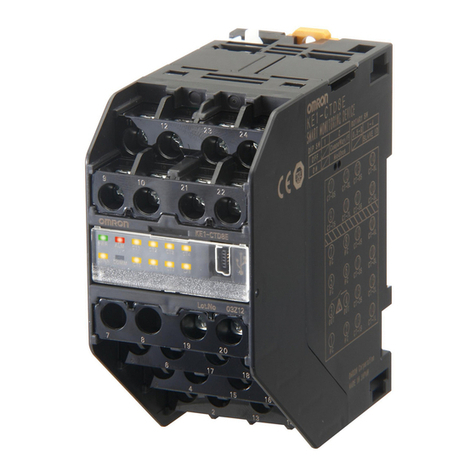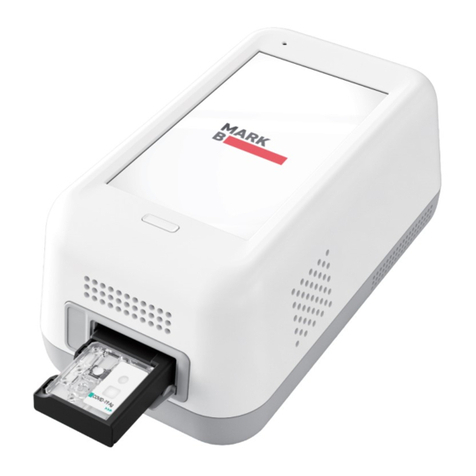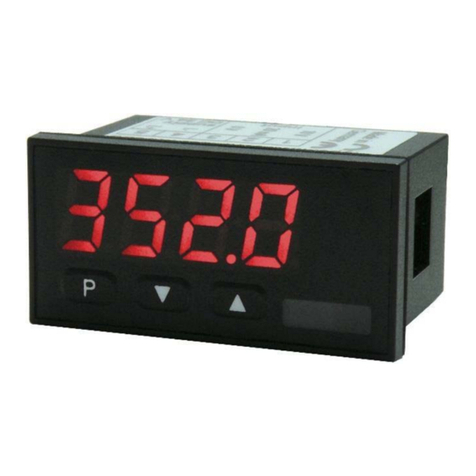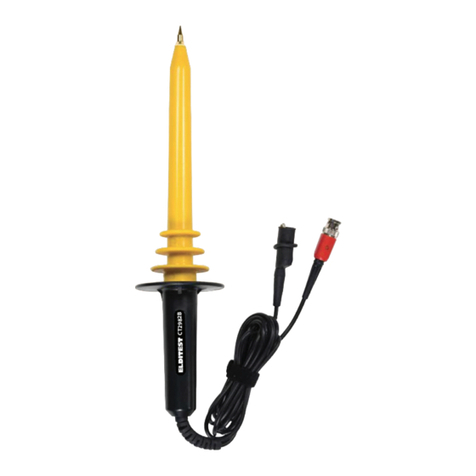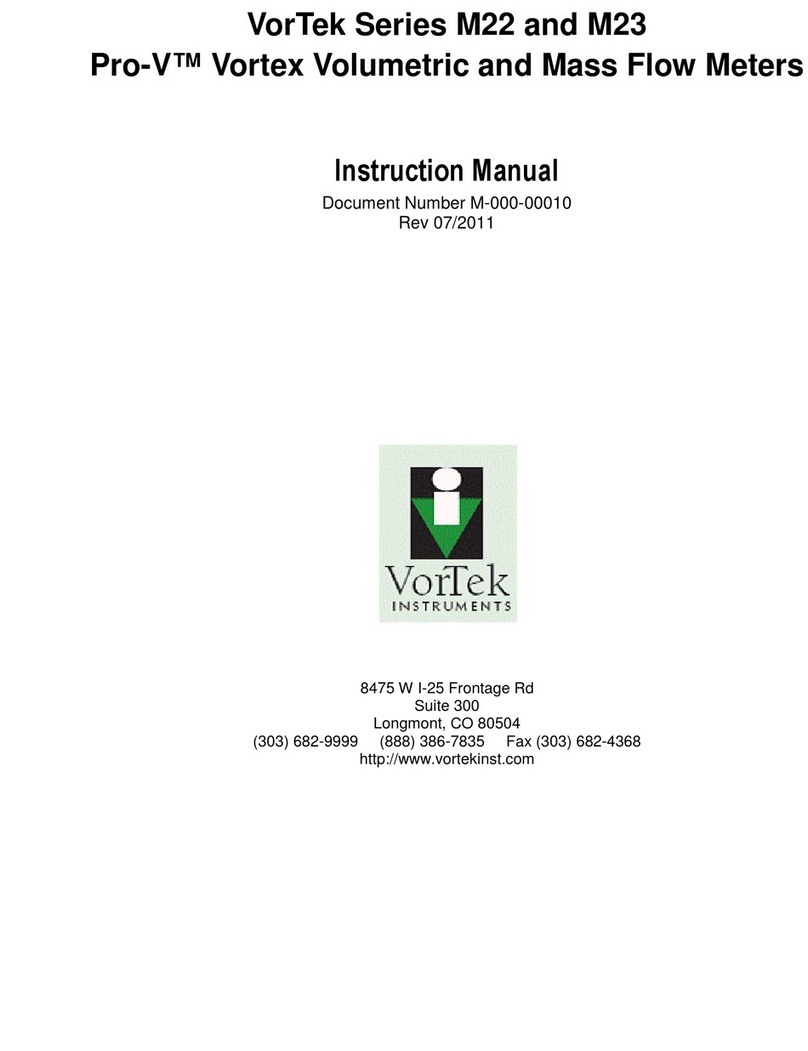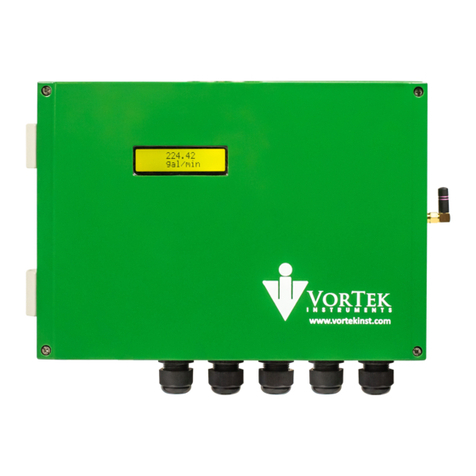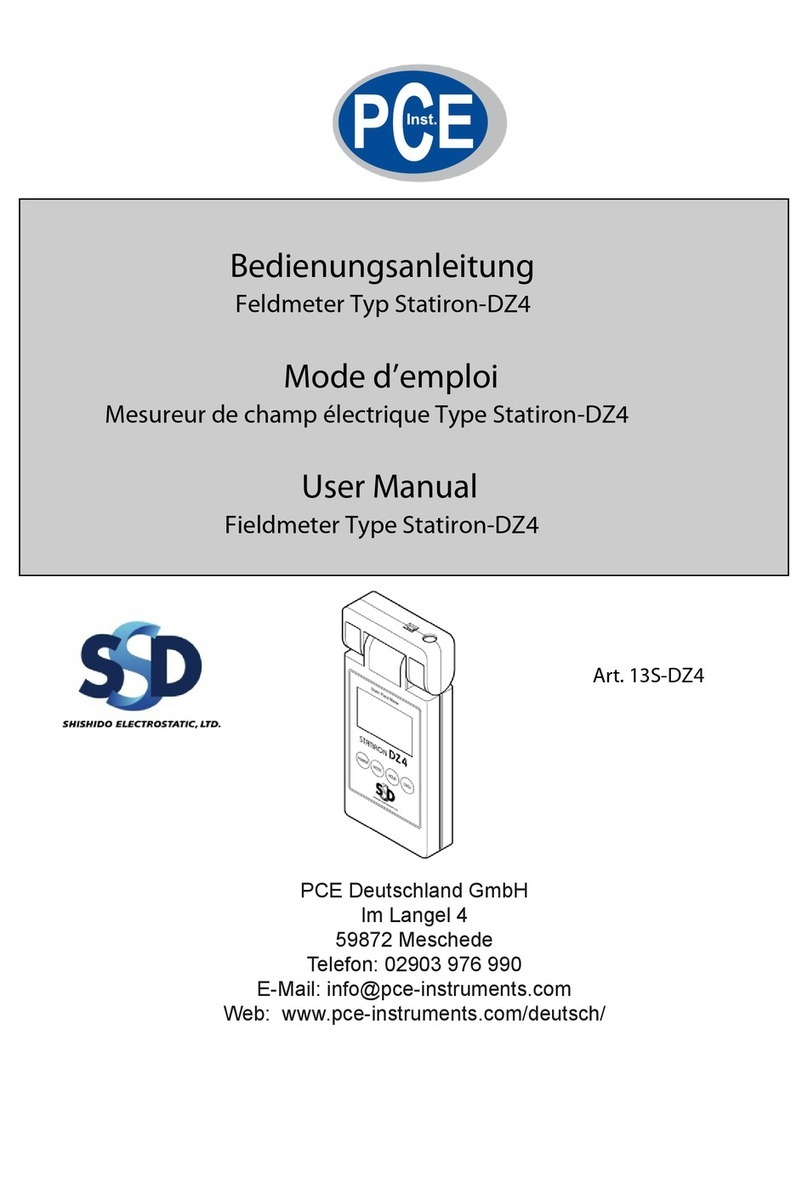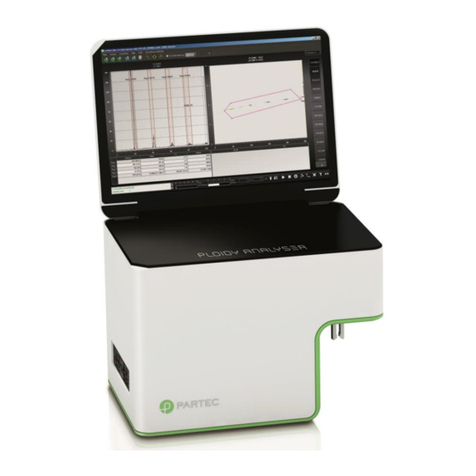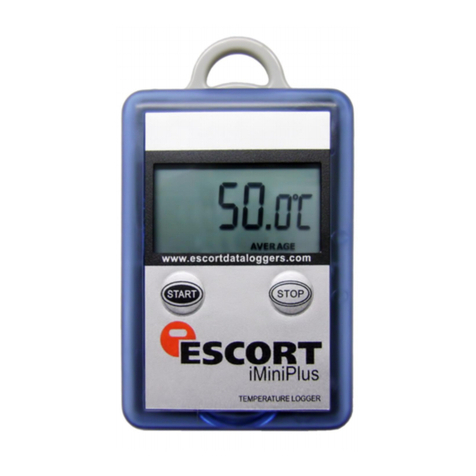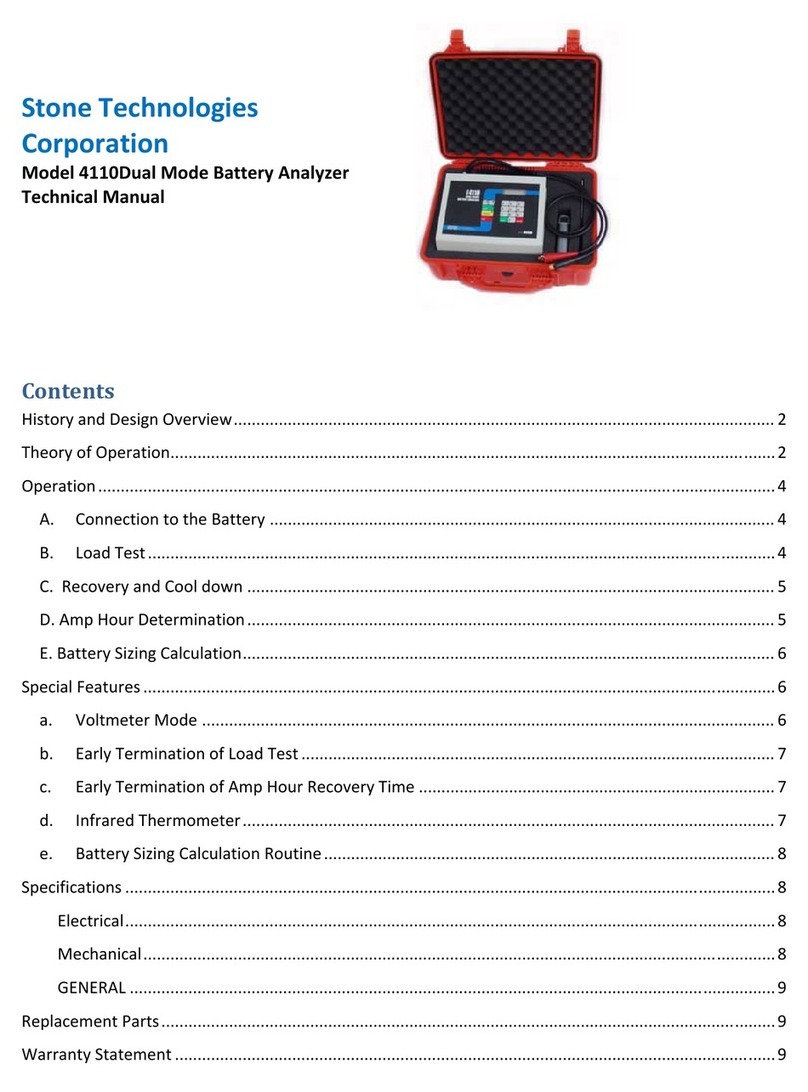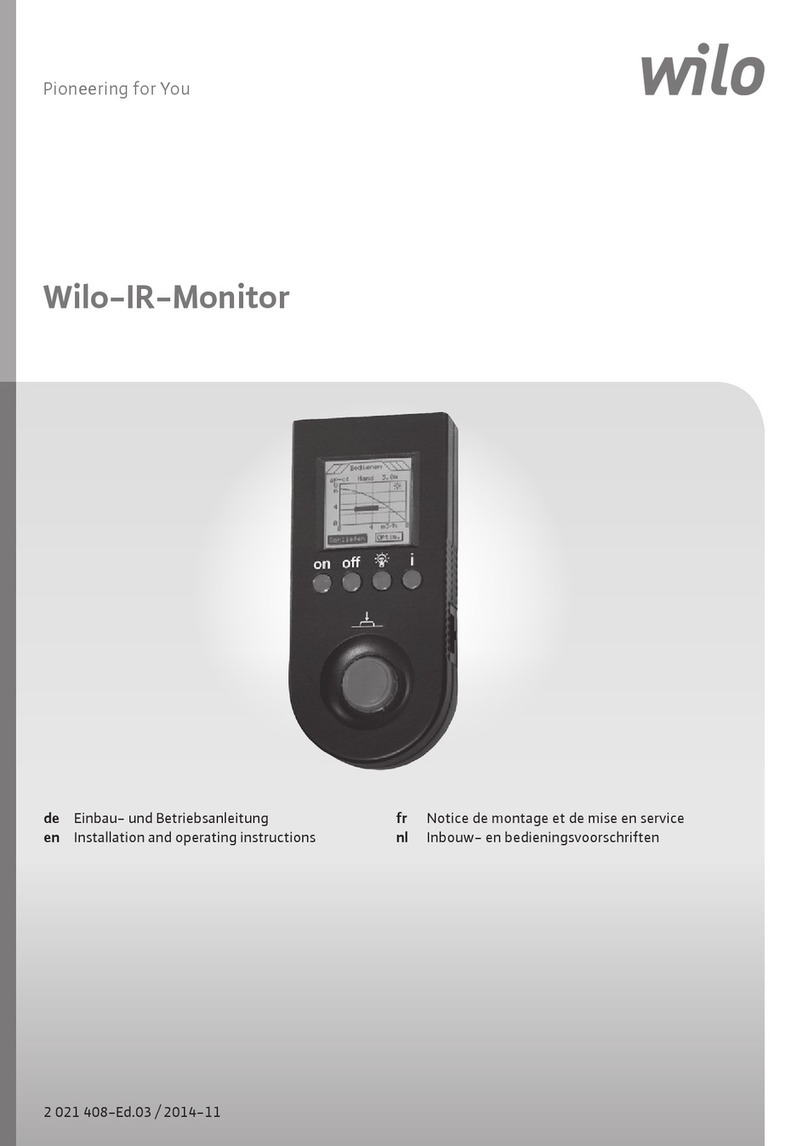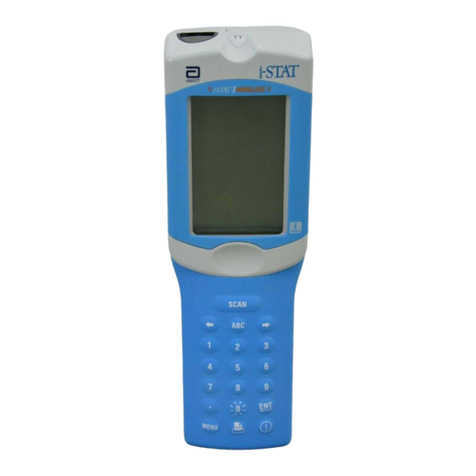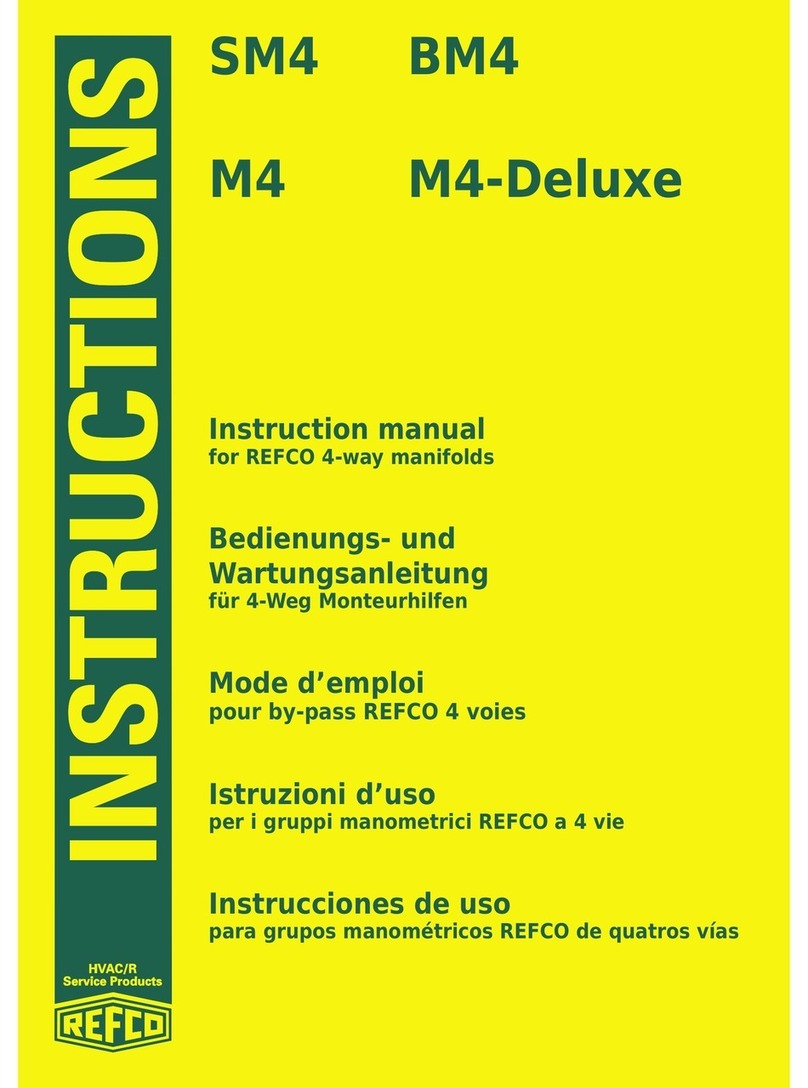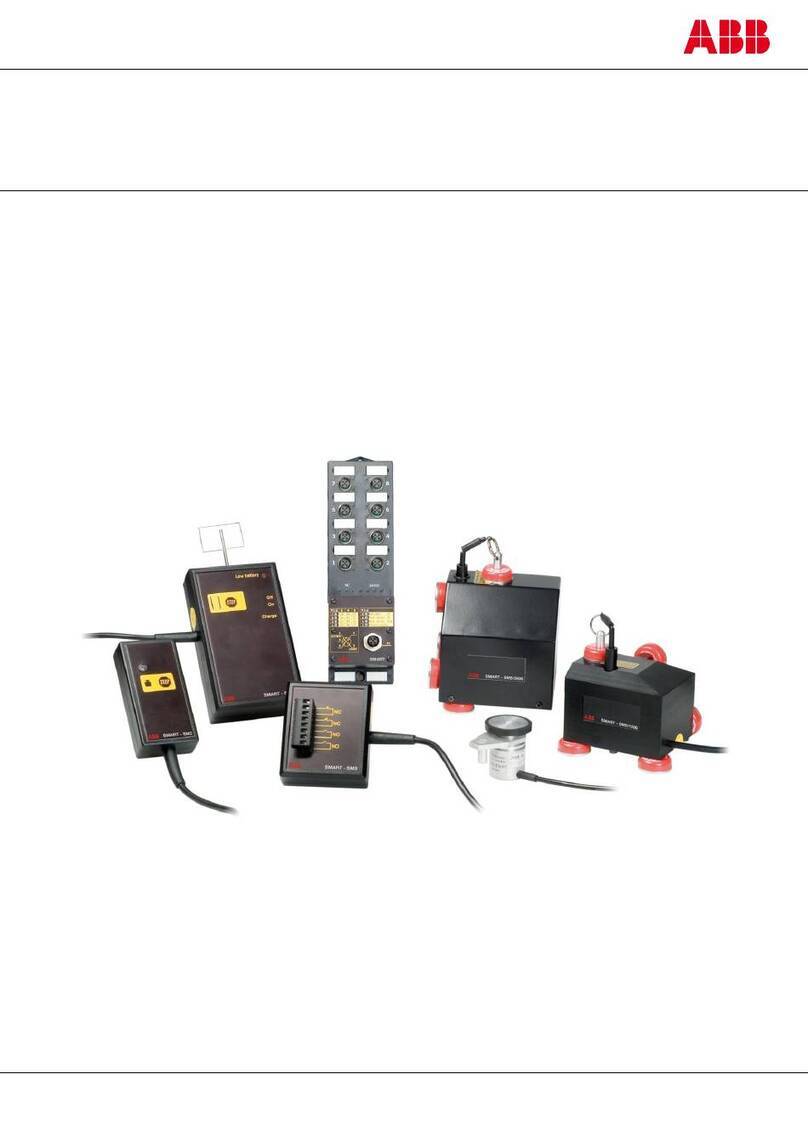
4 CALIBRATION
4.1 Important Information on Meter Calibration
Your meter has five measuring ranges. You have an option of calibrating your meter in a single point calibration for all
the five ranges or for better accuracy; you can calibrate one point in each of the measuring ranges (up to five points).
When you perform a single point recalibration, the old calibration will be replaced by the new one even if the new
calibration is done in a different range from the old calibration. For example, if you have previously calibrated at 1413 µS
in 0 to 2000 µS range, and you recalibrate at 12.88 mS in 0 to 20.00 mS range, the new calibration will override the
previous calibration in 0 to 2000 uS range.
In the case of multi point calibration, when you perform a multi point recalibration, old calibrations are replaced only on a
range basis. For example, if you previously calibrated at 1413 µS in 0 to 2000 µS range and you recalibrate at 1500 µS
(also in 0 to 2000 µS range), the meter will replace only the old calibration data (1413µS) in that range. The meter will
retain all calibration data in other ranges. To completely recalibrate your meter, or when you use a replacement
electrode, it is best to clear all calibration data.
4.2 Preparing the Meter for Calibration
Before starting calibration, make sure you are in the correct measurement mode. For best results, select a standard
value close to the sample value you are measuring.
4.3 Temperature Calibration
Your electrode features a built-in temperature sensor which is factory calibrated. Calibrate your sensor only if you
suspect temperature errors may have occurred over a long period of time or if you have a replacement electrode.
1. Connect the electrode.
2. Switch the meter on. ATC will appear at the bottom right-hand corner of the LCD.
3. Press MODE to select conductivity or TDS mode.
4. Press CAL/MEAS. The CAL indicator appears.
5. Press MODE to enter temperature calibration mode.
6. Dip the electrode into a solution of known temperature (i.e. a temperature bath). Allow time for the built-in temperature
sensor to stabilize.
7. Scroll with MI/ or MR/ to set the correct temperature value (i.e. the temperature of the temperature bath). Maximum
offset value is 5.0 °C.
8. Press ENTER to confirm. The meter will be calibrated and return to measure mode.
Note: To exit without confirming the temperature calibration value, press CAL/MEAS.
ed to carry out a conductivity / TDS
.4 Automatic or Manual, Single or Multi point Calibration (P5.0)
ctivity / TDS calibration. In the automatic
e.
ual cal can be used. You can manually input the appropriate values as
.4.1 Selection of Automatic or Manual Calibration (P5.0)
ode only, manual calibration is applicable in both
/▼until you view parameter P5.0 (ACAL).
/▼to select. “YES” activates automatic calibration, “NO” activates manual calibration.
e to return to measurement mode.
.4.2 Selection of Single or Multi Point Calibration (P5.1)
Note: If the ATC does not light up, see SETUP menu Program P3.3 to switch it on.
Note: Since temperature affects the accuracy of conductivity / TDS, it is recommend
calibration after a temperature calibration is done.
4
You can either choose automatic conductivity calibration or manual condu
calibration mode, the meter automatically detects and verifies the appropriate known calibration standards solutions
before accepting these particular calibration standards as one of its calibration values in a specific measurement rang
The known calibration standards used for automatic calibration are:
At 25.0°C : 84µS , 1413µS , 12.88mS , 111.8mS
At 20.0°C : 76µS , 1278µS , 11.67mS , 102.1mS
In the man ibration, non-standard calibration values
your desired calibration standards in each specific range.
4
Automatic calibration is applicable in conductivity measurement m
conductivity and TDS mode. Only from the conductivity measurement mode;
1. Press SETUP.
2. Press MI/▲or MR
3. Press ENTER
4. Press MI/▲or MR
5. Press ENTER to confirm.
6. Press CAL/MEAS key twic
4
Single point calibration lets you have a single calibration factor for all five ranges by calibrating one point in either one of
the ranges, this factor is applied to all the five ranges.
Multi point calibration gives better calibration accuracy by letting you calibrate in each of the five ranges, this calibration
factor would only be applicable in the particular range where the calibration is done.
5









